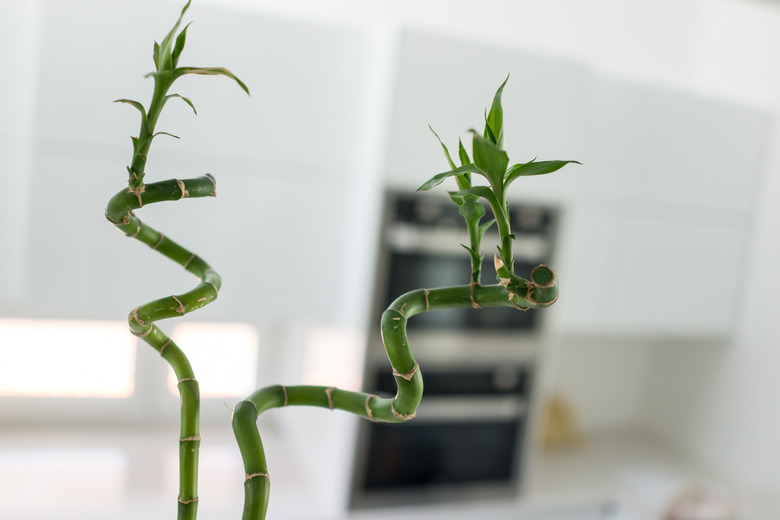How To Shape Lucky Bamboo
Lucky bamboo (Dracaena sanderiana, USDA zones 9-12) is a popular houseplant for several reasons. Not only do some cultures believe it can bring good fortune to a household, but its unusual appearance also makes it an attractive feature in your home. One of the most interesting aspects of the lucky bamboo plant is that you can train it to grow in unusual shapes.
About Lucky Bamboo
Lucky bamboo is not actually true bamboo (subfamily Bambusoideae) at all. It is a herbaceous perennial that has a bamboolike appearance thanks to the rings or nodes on its stems. In ancient Chinese tradition, the number of stalks of bamboo in your home correlates to different benefits, including love, health and wealth.
Lucky bamboo is commonly grown because it is such an easy-care plant. In fact, you can successfully grow lucky bamboo in water in a clear container with decorative pebbles to create a particularly handsome arrangement.
Shaping Lucky Bamboo
One of the unique things about growing lucky bamboo is the freedom you have in terms of the size and shape of your plant. There are several different methods of shaping lucky bamboo. If any of the bamboo stalks grow too long, you can trim them at a slight angle and then place the removed portions in water to allow roots to form before replanting them alongside the rest of your plant or in another container. You can also train lucky bamboo into various shapes, including spirals, loops and braids.
One way to grow your lucky bamboo in a particular shape, such as a spiral, you need to manipulate the light source. An easy way to do this is using a cardboard box with a hole cut into it. Place the box over your bamboo plant with the hole facing the light source. Your plant will grow toward the light. You can then experiment with turning your plant slightly within the box to manipulate the angle at which it grows. Turning your plant in this manner can gradually force it to grow in a spiral shape, although the process can take many months.
You can also use annealed copper wire to curl a young, flexible lucky bamboo plant via a method that's similar to wiring bonsai. Start at the base of the plant, keeping the coils of wire around the stem fairly close together, not too snug and spiraling upward. Once you've reached the top, you can gently bend or twist a segment of the plant into a spiral or curl that's held in place by the wire.
Check your bamboo frequently in case the wire becomes too tight and cuts into the stem, and rewrap it if necessary. Once the plant has matured sufficiently, it will retain its new shape, and you can remove the wire by starting at the top and gently unwinding it.
If you want to create a braid in your lucky bamboo, it is a quicker process. Simply select three flexible plants that are potted together around 2 inches apart and braid the three as you would braid hair. Be gentle and don't tug too hard, as this could cause your bamboo to snap. Once you are satisfied with the appearance of the braid, you can hold it in place with a twist tie. As the plant matures, the braid configuration will strengthen and the tie can be removed.
Caring for Lucky Bamboo
When growing your lucky bamboo in water, use distilled or filtered water and keep the water fresh and clean, changing it whenever it starts to look murky. You can also plant your lucky bamboo in soil if you want to grow a bigger plant.
Lucky bamboo's natural habitat is in the shade of larger plants. Situate your plant in an area with bright, indirect light and temperatures between 65 and 95 degrees Fahrenheit to keep it happy and healthy.
